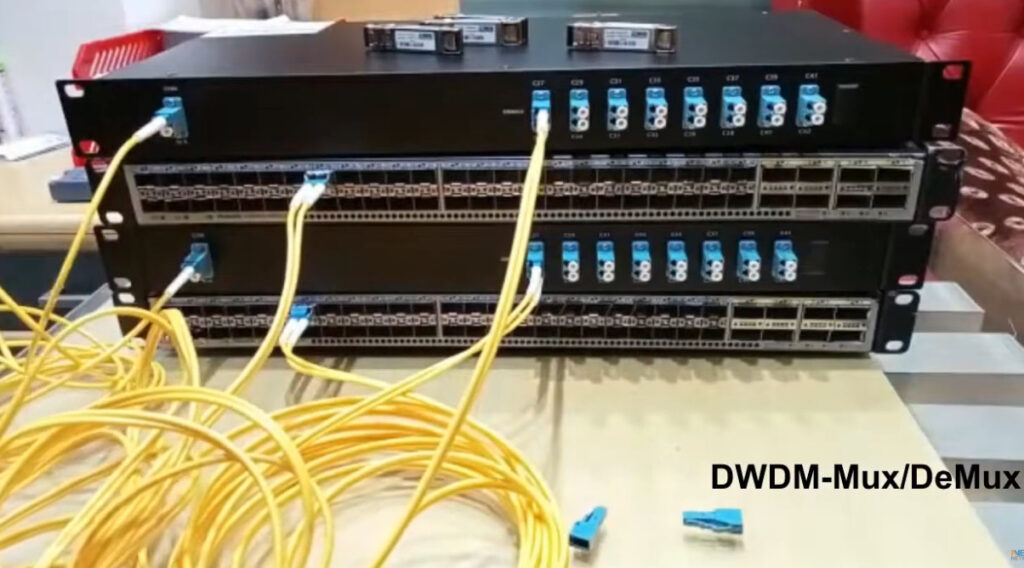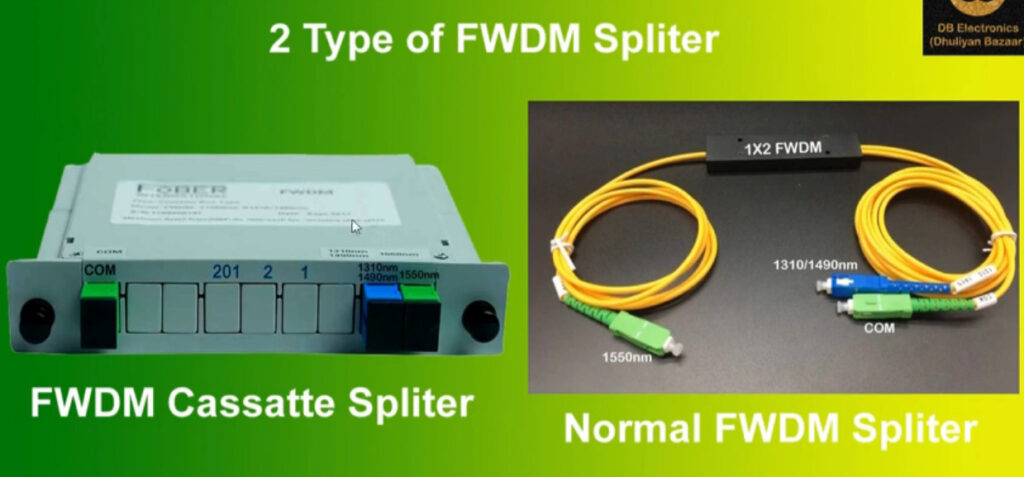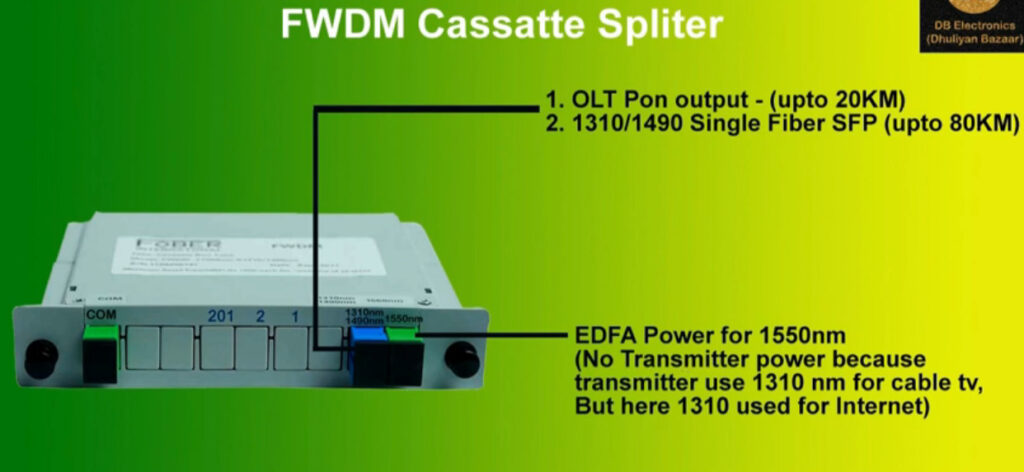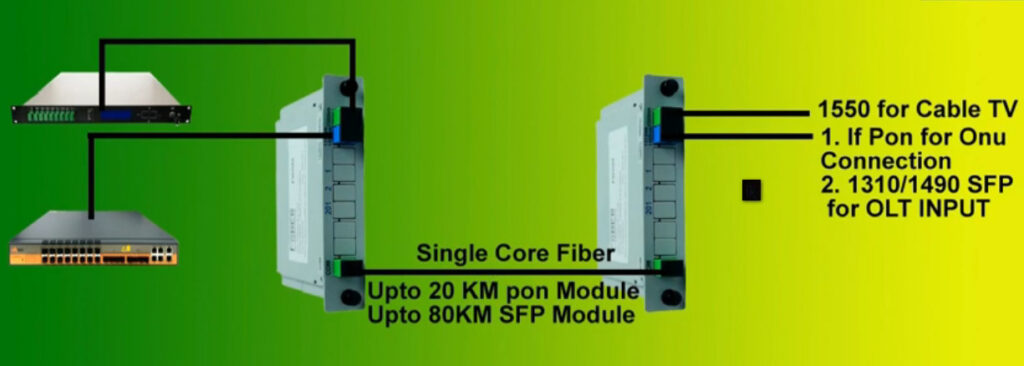- 8777701917
- info@saikatinfotech.com
- Basirhat W.B
FWDM (Fiber Wavelength Division Multiplexing), CWDM (Coarse Wavelength Division Multiplexing), and DWDM (Dense Wavelength Division Multiplexing) are technologies used in optical communication to multiplex multiple signals onto a single optical fiber by using different wavelengths (or channels) of light. This allows for increased capacity and more efficient use of the available fiber infrastructure. Let’s break them down:
| Feature | CWDM | DWDM |
|---|---|---|
| Channel Spacing | 20 nm | 0.8 nm to 1.6 nm |
| Number of Channels | Up to 18 | 40, 80, or more |
| Wavelength Range | 1270 nm to 1330 nm | 1525 nm to 1565 nm (C-band) |
| Cost | Less expensive | More expensive due to precision |
| Data Rate | Typically 1-10 Gbps per channel | 10 Gbps to 400 Gbps or more |
| Distance | Shorter (metro, enterprise) | Longer (long-haul, undersea) |
Would you like more details on any of these?




